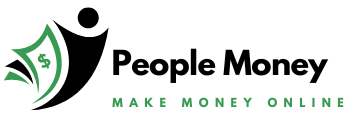In today’s interconnected world, businesses need to think globally. Multilingual search engine optimization (SEO) is the practice of optimizing your website to rank well in search results for multiple languages. This can help you reach a wider audience, increase traffic to your website, and boost your sales.
Benefits of Multilingual SEO
There are many benefits to implementing multilingual SEO. These include:
- Increased traffic: By targeting multiple languages, you can reach a wider audience and attract more visitors to your website.
- Higher search engine rankings: Multilingual SEO can help you improve your website’s ranking in search results, making it more likely that people will find your website when they are searching for information in different languages.
- Increased brand awareness: When your website is available in multiple languages, it can help to increase brand awareness and build a stronger relationship with your customers.
- Boosted sales: Multilingual SEO can lead to increased sales, as potential customers from all over the world can easily access and purchase your products or services.
How to Implement Multilingual SEO
To implement multilingual SEO, you will need to:
- Choose the right languages: The first step is to choose the right languages to target. You should consider the languages that your target audience speaks, as well as the languages that are most popular in the countries where you want to do business.
- Translate your website: Once you have chosen the languages that you want to target, you will need to translate your website into those languages. This is a complex task, so it is important to hire a professional translation company to ensure that your website is translated accurately and effectively.
- Create language-specific content: In addition to translating your website, you should also create language-specific content. This could include blog posts, articles, videos, and social media posts. This content should be relevant to the interests of your target audience and should be written in a way that is easy to understand.
- Optimize your website for local search: When you are targeting multiple languages, you need to optimize your website for local search in each country. This includes using local keywords and phrases, as well as providing information that is relevant to local users.
- Build backlinks: Backlinks are links from other websites to your website. They are an important factor in SEO, as they help to improve your website’s ranking in search results. When you are targeting multiple languages, you need to build backlinks from websites that are written in those languages.
Multilingual SEO Best Practices
To achieve the best results from your multilingual SEO efforts, you should follow these best practices:
- Use a language detection tool: A language detection tool can automatically detect the language of a user’s browser and redirect them to the appropriate language version of your website.
- Use hreflang tags: Hreflang tags are HTML tags that tell Google the language of a particular page on your website. This helps Google to serve the correct language version of your website to users.
- Create a dedicated multilingual sitemap: A multilingual sitemap is a sitemap that contains the URLs of all of the different language versions of your website. This helps Google to crawl and index your website more effectively.
- Monitor your results: It is important to monitor the results of your multilingual SEO efforts to see what is working and what is not. You can use Google Analytics to track website traffic and conversions.
FAQs
- 1. Why is multilingual SEO important?
Multilingual SEO is important because it helps you to reach a wider audience, increase traffic to your website, and boost your sales. - 2. How do I choose the right languages to target?
You should consider the languages that your target audience speaks, as well as the languages that are most popular in the countries where you want to do business. - 3. How do I translate my website?
You should hire a professional translation company to translate your website accurately and effectively. - 4. What is hreflang?
Hreflang is an HTML tag that tells Google the language of a particular page on your website. - 5. How do I monitor the results of my multilingual SEO efforts?
You can use Google Analytics to track website traffic and conversions.
Conclusion
Multilingual SEO is a complex but rewarding undertaking. By following the tips in this guide, you can optimize your website for multiple languages and reach a wider audience. This can help you to increase traffic to your website, boost your sales, and grow your business.




